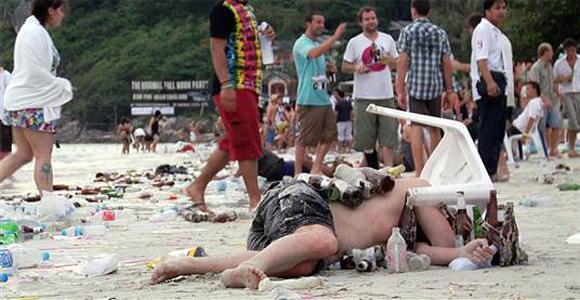The Push to Curb Travel’s Impact on the Environment


A new film, coupled with potential new airline regulations, seeks to mitigate the environmental damage of travel.
A new documentary hitting theaters in New York and Chicago this month will urge travelers to think about how their actions affect the planet. Gringo Trails examines how millions of tourists are degrading local cultures and the environment, aiming to “reveal the complex relationships between colliding cultures: host countries hungry for financial security and the tourists who provide it in their quest for authentic experiences.”
According to the World Tourism Organization, the number of international travelers in 2013 reached 1.87 billion, a figure that is likely to increase in coming years, according to Pegi Vail, the film’s director and associate director of New York University’s Center for Media, Culture and History. “I really love travel, so I wanted to share what could potentially happen in some places if we’re not careful … from both the host’s and the guest’s perspective,” Vail told the Today Show.
Vail’s film takes viewers through Amazon jungles, Thai beaches, and other locales like Timbuktu and Mail. It also features three decades of footage to expose the effects of tourism on a number of different communities. For example, Haad Rin Beach in Thailand used to lure stray backpackers to its unspoiled environment. Over time, however, the area attracted visitors and party goers who littered the beach with garbage.
Jim Sano, vice president of travel and conservation for the World Wildlife Fund, pointed out: “There used to be incredible coral reefs throughout the Caribbean, and with increased development, including tourism, the number of fish and quality of the coral reef is seriously degraded.”
The film suggests that tourists don’t always realize the dangers they pose. One scene shows a guide warning a woman that the bug repellant she’s wearing is toxic to the snake she’s about to touch.
Gringo Trails encourages people to travel more responsibly by researching the local history, culture and ecology of destinations. “What are the cultural norms? That’s something you can do ahead of time, educate yourself. It doesn’t cost anything. Anyone can get online and learn about a place before they go,” Vail said.
In addition to the effects of tourism on the ground, the aircraft transporting tourists also pose a threat to the planet. The United States Environmental Protection Agency (EPA) has been studying the effects of such air pollution and is expected to release its findings sometime in the next seven months. If the agency deems aircraft greenhouse-gas emissions to be a hazardous threat, it will likely create new regulations that affect how airlines operate, according to Bloomberg Businessweek.
Across the Atlantic, airlines have fought the European Union’s efforts to curb pollution. The carriers prefer that the United Nations’ International Civil Aviation Organization (ICAO) set international standards instead. Any EPA recommendations are likely to be incorporated into ICAO rules by 2016.
According to Dave Swierenga, president of aviation consultant Aeroecon in Round Rock, Texas, reducing aircraft emissions won’t be easy because planes can’t use the same alternative fuels that automobiles can. That hasn’t prevented companies from researching options, though. Delta Air Lines, Boeing and other industry leaders have pledged to reduce their carbon footprints through the use of new biofuels and updated aircraft design. “The aviation industry has set very aggressive goals to reduce emissions,” said Jessica Kowal, a spokeswoman for Boeing.
“If you look at the history of fuel efficiency in the industry, it’s hard to criticize the industry,” Swierenga told Bloomberg. “They have constantly and continuously invested in more fuel-efficient airplanes and the less fuel they use, the fewer the emissions they have.”
[Photo: Pegi Veil / Icarus Films]





















